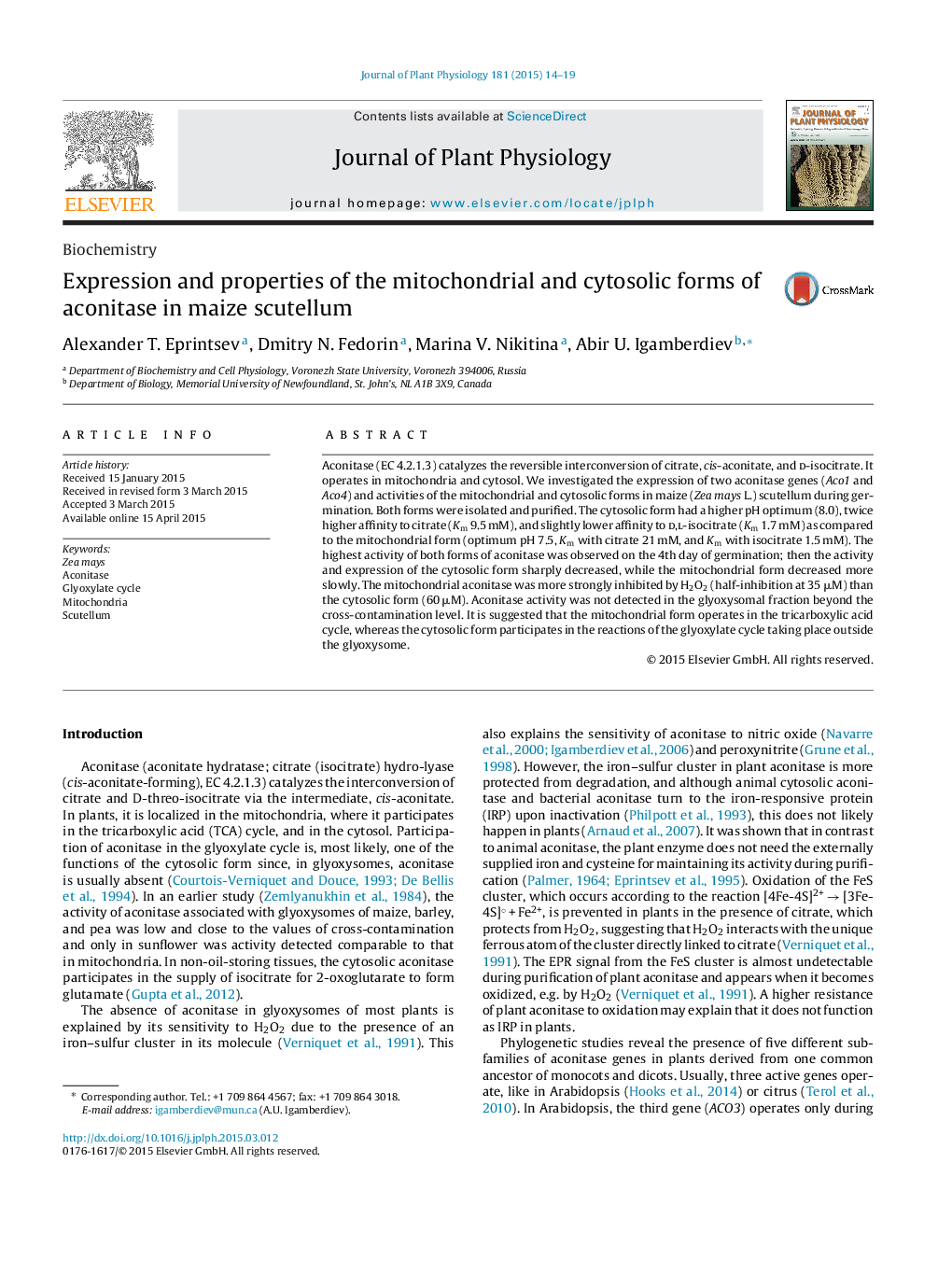| Article ID | Journal | Published Year | Pages | File Type |
|---|---|---|---|---|
| 2055601 | Journal of Plant Physiology | 2015 | 6 Pages |
Aconitase (EC 4.2.1.3) catalyzes the reversible interconversion of citrate, cis-aconitate, and d-isocitrate. It operates in mitochondria and cytosol. We investigated the expression of two aconitase genes (Aco1 and Aco4) and activities of the mitochondrial and cytosolic forms in maize (Zea mays L.) scutellum during germination. Both forms were isolated and purified. The cytosolic form had a higher pH optimum (8.0), twice higher affinity to citrate (Km 9.5 mM), and slightly lower affinity to d,l-isocitrate (Km 1.7 mM) as compared to the mitochondrial form (optimum pH 7.5, Km with citrate 21 mM, and Km with isocitrate 1.5 mM). The highest activity of both forms of aconitase was observed on the 4th day of germination; then the activity and expression of the cytosolic form sharply decreased, while the mitochondrial form decreased more slowly. The mitochondrial aconitase was more strongly inhibited by H2O2 (half-inhibition at 35 μM) than the cytosolic form (60 μM). Aconitase activity was not detected in the glyoxysomal fraction beyond the cross-contamination level. It is suggested that the mitochondrial form operates in the tricarboxylic acid cycle, whereas the cytosolic form participates in the reactions of the glyoxylate cycle taking place outside the glyoxysome.
